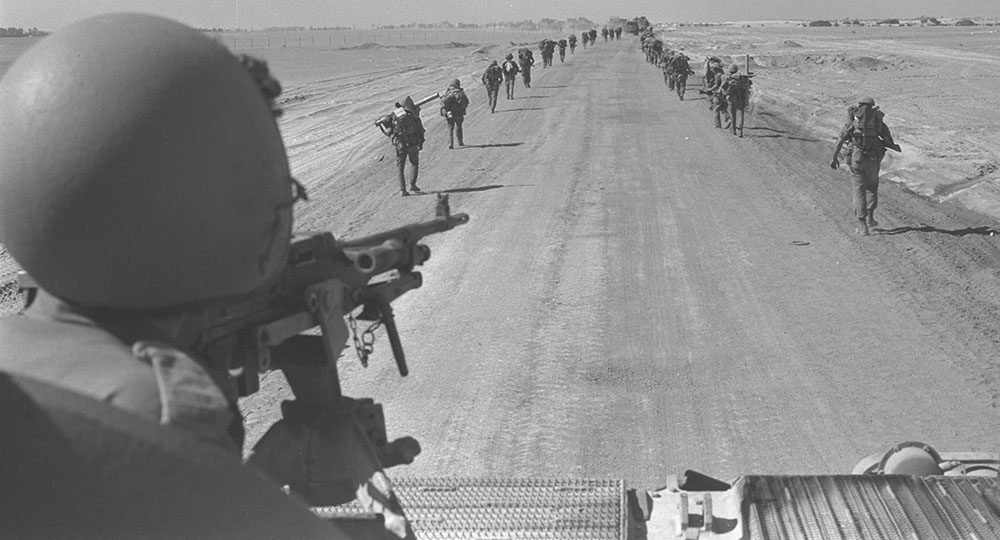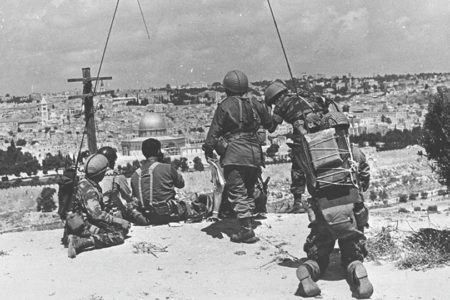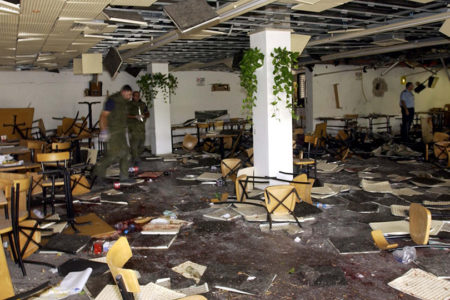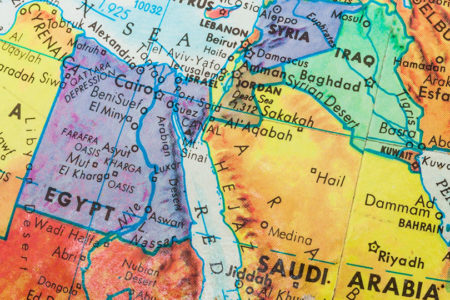The Yom Kippur War
October 6-November 11, 1973
Anwar Sadat replaced Nasser as Egypt’s president after Nasser’s death in 1970. Sadat believed he had to regain the Sinai taken by Israel in 1967. Israeli intelligence warned the government that war could be imminent because of Egyptian and Syrian military buildups on the borders; but the warning went unheeded. Sadat removed the Soviet advisers and joined President Hafez al-Assad of Syria to wage war against Israel. Although Jordan prepared a military buildup on the Jordanian-Israeli border, the country stayed out of the war.
On October 6, 1973, Yom Kippur (the holiest day on Israel’s calendar), Egypt and Syria attacked an ill-prepared Israel on two fronts. On the Golan Heights, a skeleton Israeli force with 180 Israeli tanks faced 1,400 Syrian tanks; in the Sinai, 600,000 Egyptians using 2,000 tanks and 500 aircraft attacked 500 Israelis trying to defend their positions along the Bar Lev Line by the Suez Canal. The attacks stunned Israel. Egypt and Syria were backed financially and militarily by at least nine Arab nations.
Intense fighting produced heavy losses on both sides. By October 7, the Syrians were within 800 meters of the Israeli settlement of El Al near the Sea of Galilee. The battle raged. By October 10 Israeli forces were reinforced, drove the Syrians from the Golan Heights, and forced them back to the cease-fire line. On October 11 Israeli forces counter-attacked into Syria; and on October 12, they came within 18 miles of Damascus, the Syrian capital.
U.S. President Richard M. Nixon received Congressional approval for $2.2 billion in emergency aid for Israel and ordered an airlift to resupply Israel with military equipment to counterbalance the Soviet Union’s massive airlift to Egypt.
Following an intense three-day tank battle in the Sinai, Israel defeated the Egyptians. Israeli paratroopers crossed the canal and by October 18 had almost reached Cairo. Saudi Arabia and Libya cut off oil to the United States, and the Soviets threatened to enter the fighting. U.S. Secretary of State Henry Kissinger went to Russia to talk about restoring peace.
On October 21 the UN Security Council adopted Resolution 338, calling for, among other things, a cease-fire and implementation of Resolution 242. The UN also voted to place UN observers along the ceasefire lines. Syria would accept the resolution only if Israel withdrew from the land it won during the Six-Day War. Egypt and Israel accused each other of cease-fire violations, and heavy fighting resumed on the Suez Canal front. Israeli forces pushed south and cut off the city of Suez and the Egyptian Third Army of 20,000 men. Israel was forced to accept a cease-fire just when it was capable of destroying the Egyptian army. On November 11 Israel and Egypt signed a cease-fire accord drawn up by Kissinger and Sadat.
The Outcome. Kissinger negotiated two Sinai accords. They (1) freed Egypt’s Third Army, trapped by Israel in the Sinai; (2) gave Egypt control of the Suez Canal; (3) forced Israel to withdraw from several strategic places in Sinai; (4) placed UN-policed buffer zones between the two forces; (5) placed a UN buffer zone between Israel and Syria; (6) and gave Syria back the border town of Kuneitra, which it promptly stocked with military installations, artillery, and ammunition







